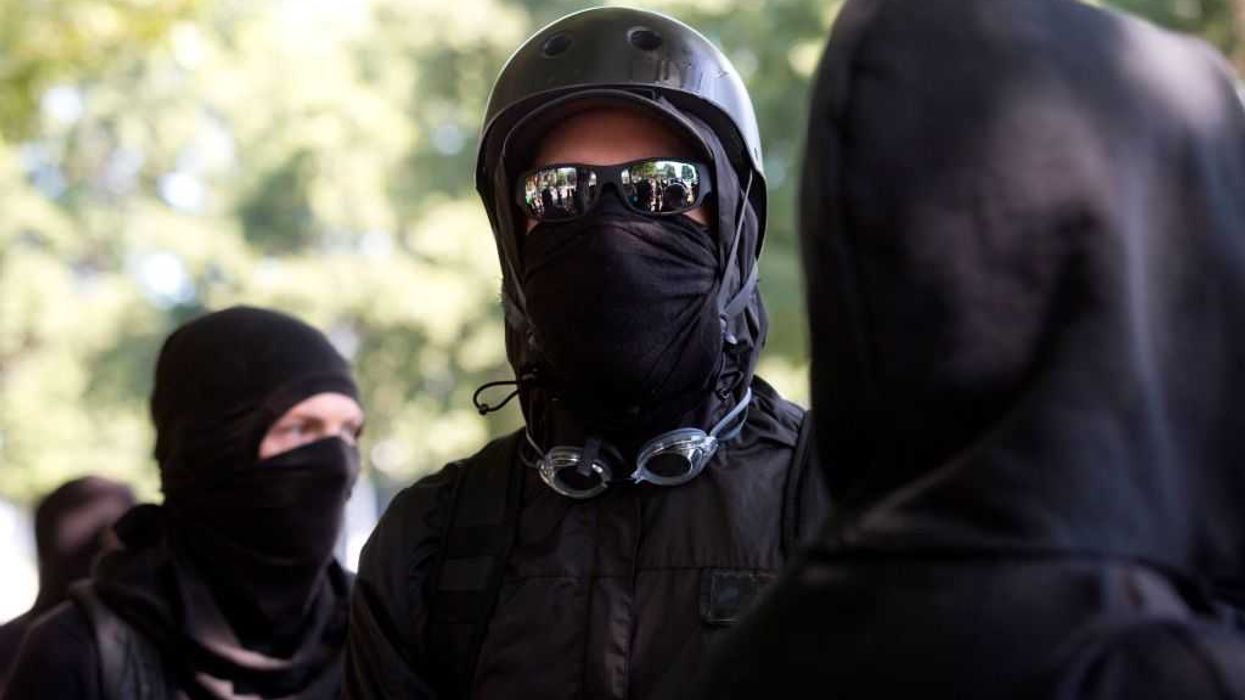This morning on the radio show, Dana Loesch filled in for Glenn who is away on vacation. Many of you may know her from CNN, Breitbart news, or even her guest spots right here on GBTV, but Dana wasn't always the strong conservative that she is today. In fact, prior to September 11th, Dana was a pretty hardcore liberal.
"I'm a reformed liberal," Dana said this morning while introducing herself to the Glenn Beck radio audience.
She continued, explaining that she had her "come to Jesus moment" on 9/11 as she watched the towers falls on her television. She realized in that moment that the ideology which she had believed in doesn't work in reality - there are repercussions.
Dana, who grew up in a home of southern Democrats in Missouri, had already started her journey towards conservatism prior to 9/11 after being disenfranchised by the left's treatment of Hilary Clinton during the Monica Lewinsky scandal. Having a background in journalism, she began writing for a couple of daily newspapers, did a few television spots here and there, and right before the 2008 election Dana got involved in radio.
Dana's radio show is where the St. Louis Tea Party was launched.
"Conservatives didn't take the streets and protest," Dana recalled.
She explained thinking, at that time, that no one would show up to their first Tea Party rally, which took place under the arch in St. Louis. It was a cold, bitter day, but people began flooding the city - nearly 2,000 people showed up that day in St. Louis, and even more in cities all across the country.
"It was inspiring," she said. "We felt that the odds were against us. We didn't really think that people were going to show up for this. We asked ourselves, 'are people upset enough to get involved? Are people going to want be involved as much as us?' But they did. And it took one person like me and many other one persons out there all across the country that made this happen."
And now, four years later, we are still seeing the same involvement across our country, Dana noted, looking to what occurred with Chick-fil-a just last week, and the bigger victories that have occurred over the last few years.
"We have come such a long way. We have amassed so many victories," Dana started. "You can't depend on mainstream media to report what we have accomplished. If you compare the new conservative movement. If you compare the grassroots movement to what the left has tried to copy from the 60s - the Occupy Movement. It shows that dedication, persistence, compassion, and passion are all going to pay off. We completely secured the Republican majority in the house. Were it not for the Tea Party there would be no Republican majority in the House. We wouldn't have enough in the Senate even to raise a fuss. Were it not for the Tea Party movement we wouldn't have victories like we did over the establishment in Indiana, we wouldn't have people like Chris Christie in New Jersey, we wouldn't have Marco Rubio in Florida, and we definitely wouldn't have Ted Cruz in Texas. This is a grass roots uprising and we have really racked up a lot of victories. And it's been because of people like you. Because of people like me. Everyone rolling up their shirt sleeves and saying, 'What can I do? Where can I get involved? I have this particular skill set. How can I use it to amplify the movement and conservatism?' and that's what I'm about."
"I hope when people hear what my background is that they are somehow motivated to get involved themselves."
Dana will also be guest hosting tonight on The Glenn Beck Program LIVE at 5pm ET (or on demand) on GBTV. Start a 14 day FREE trial today!

 AFP Contributor / Contributor | Getty Images
AFP Contributor / Contributor | Getty Images

 Tamir Kalifa / Stringer | Getty Images
Tamir Kalifa / Stringer | Getty Images